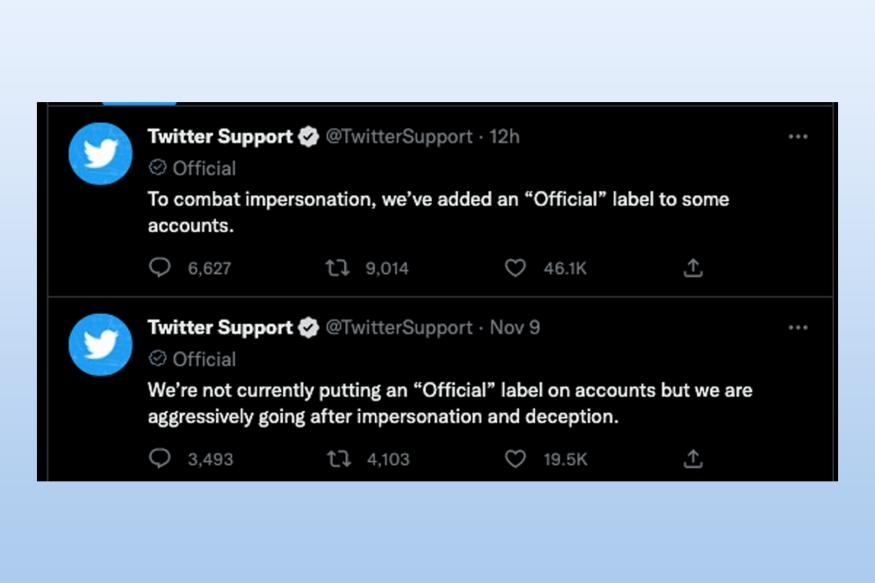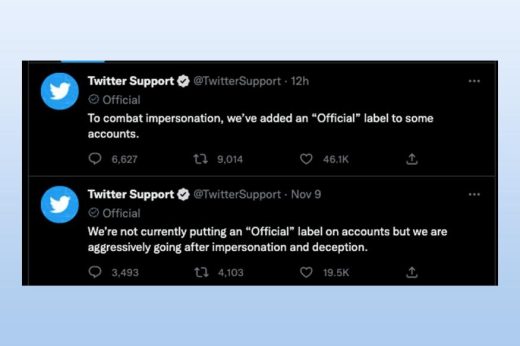X may soon add ID verification for ‘preventing impersonation’
Twitter Blue verification was a complete disaster in exactly the ways everyone predicted
Elon Musk’s plan to democratize Twitter verification lasted less than two days. Twitter has temporarily pulled new signups for Twitter Blue after the platform was overrun by verified trolls. The company told staffers subscriptions were on hold to “help address impersonation issues,” according to Platformer’s Zoe Schiffer. It turns out paid verification was as much of a mess as nearly everyone predicted.
At first, it seemed as if Twitter had a plan to address the impersonation issue. Just ahead of the rollout of the new Twitter Blue, It introduced a separate “official” badge that would be appended to “government accounts, commercial companies, business partners, major media outlets, publishers and some public figures.” But Musk quickly changed his mind, and killed the idea just a few hours after it was announced. Paid verification launched Wednesday, without the label.
Unsurprisingly, it started to go wrong almost immediately. A fake Nintendo account posted an image of Mario flipping everyone off. A fake Tony Blair retweeted a fake George Bush. A verified Pope John Paul tweeted conspiracy theories at a verified Martin Luther account, which was replying to a verified Pope Francis impersonator. An account masquerading as Twitter’s official @verified tweeted crypto scams. An imposter LeBron said he was requesting a trade.

Twitter responded by halting Blue subscriptions for new accounts, but the move had little effect on the deluge of verified trolling. Fake accounts sprung up to interact with other impersonators.
One of the most viral examples was a verified Eli Lilly account that tweeted “insulin is free now,” which forced the real ELi Lilly to apologize for the “misleading” tweet because its insulin is, in fact, not free. Another fake Eli Lilly then apologized for the actual Eli Lilly’s apology. An account that appeared to belong to a Twitter ad sales rep desperately tweeted at Musk to remove the fake Eli Lilly accounts. Both of the fake Eli Lilly accounts were suspended, but the tweets still sent the pharma company’s stock into a nosedive.
Musk responded that parody accounts needed to be clearly labeled. “Tricking people is not okay,” he tweeted. Some made half-hearted attempts to comply. A fake Tesla account going by @Teslareal scrawled “parody” onto the header image in its profile, but continued to troll Musk (the account is now suspended).
“Comedy is now legal on Twitter” –@elonmusk pic.twitter.com/oyZ73XSFuC
— Karissa Bell (@karissabe) November 11, 2022
Meanwhile, a number of extremists and conspiracy theorists also purchased verification, including — ironically — Jason Kessler, whose 2017 Twitter verification prompted a nearly four-year “pause” of verification. Media Matters reported that many of these newly verified right-wing accounts were already using them to amplify misinformation. A verified account impersonating Arizona candidate for governor Kari Lake tweeted that she had won her race even though it had not yet been called, according to The Washington Post.
By Friday morning Twitter Blue subscriptions were no longer available in Twitter’s app or website. And it’s unclear when it could re-launch. And, two days after Musk said the blue check would be “the great leveler,” Twitter confirmed it would bring back the gray “official” label after all in order to “combat impersonation.”
But despite the constant policy reversals and the flood of impersonators, Musk was still upbeat. “Some epically funny tweets,” he said. “Hit all-time high of active users today.” he added.
(16)



